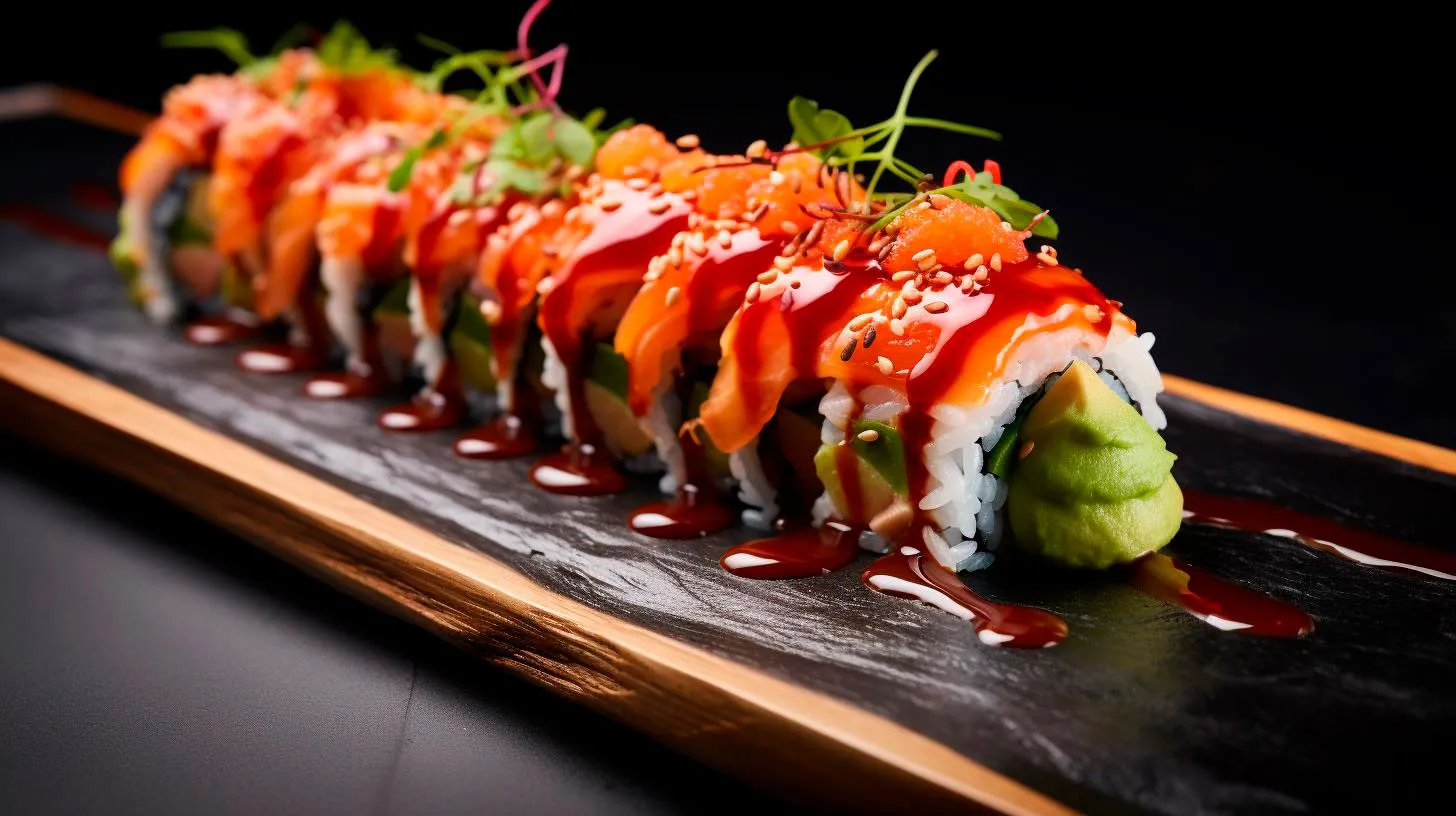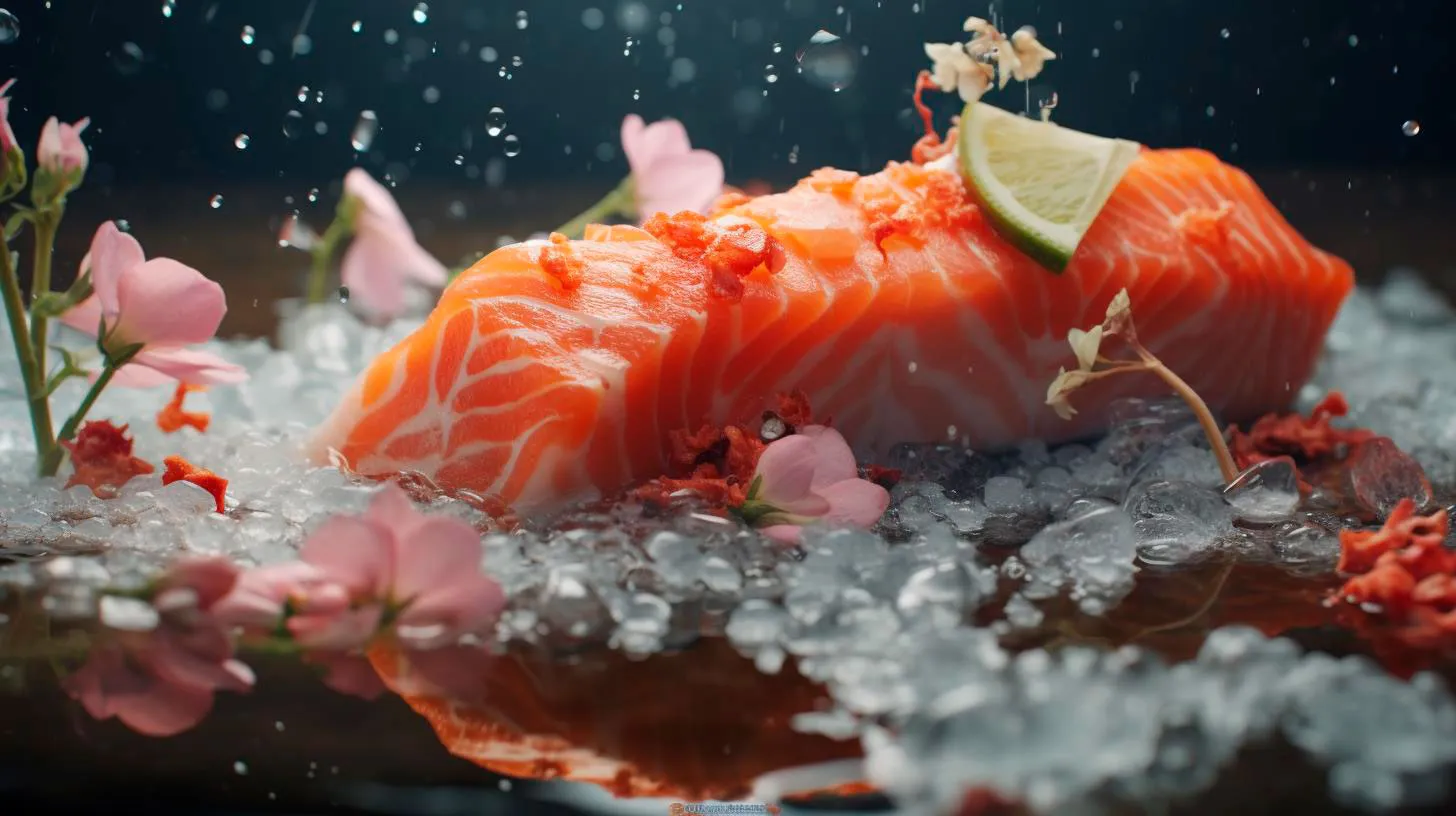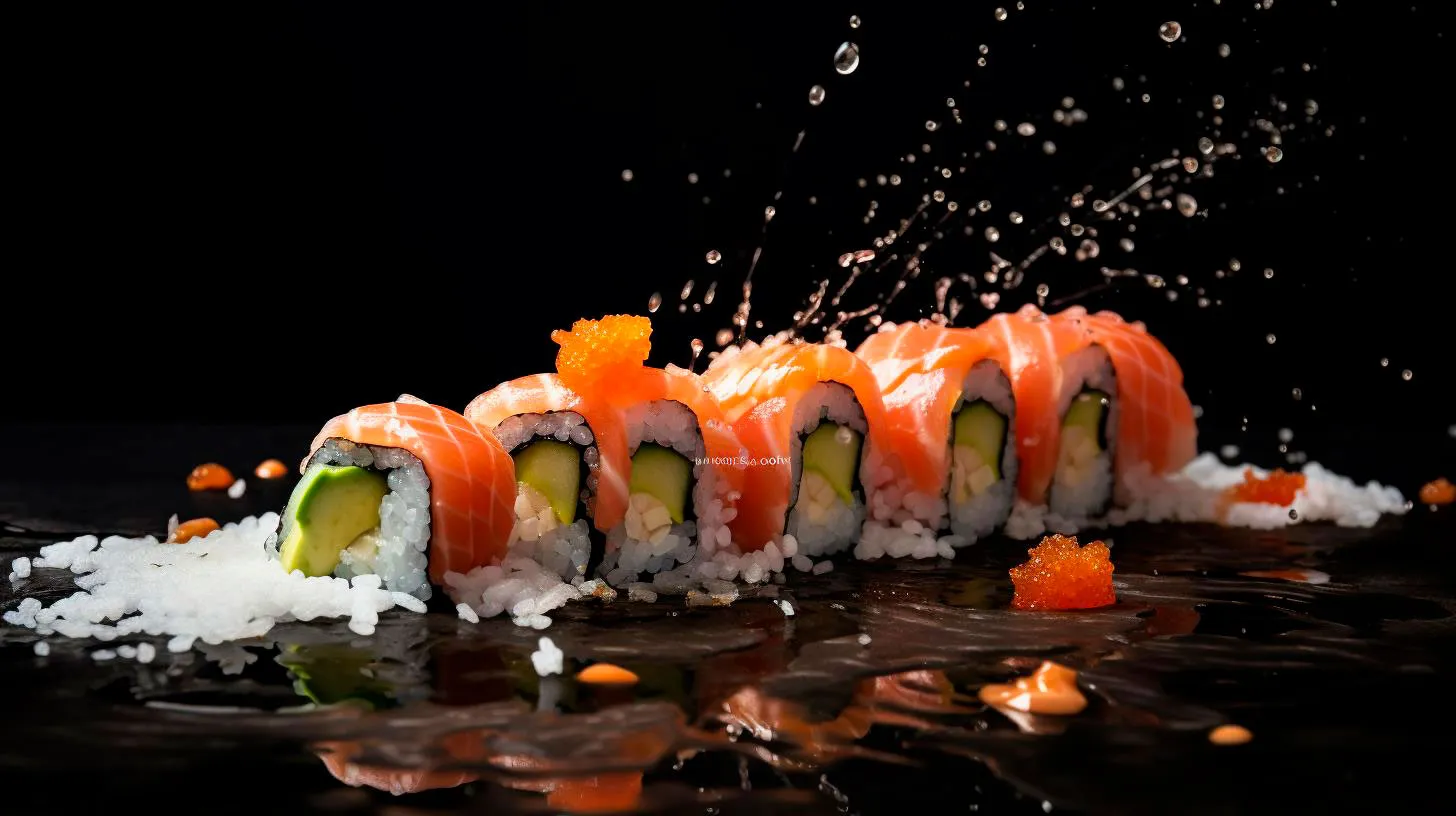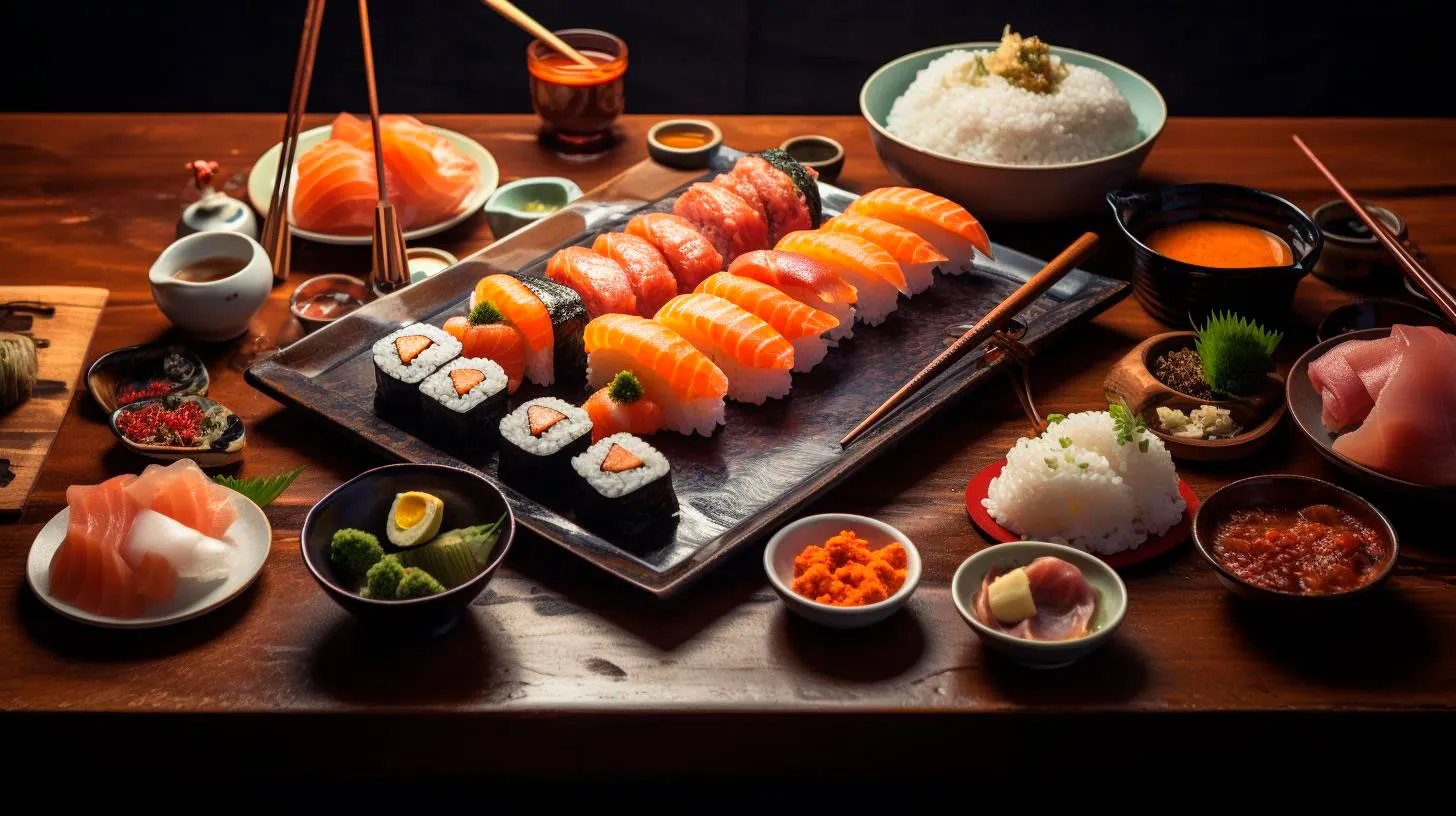Reviving Tradition: Exploring Timeless Sushi Serving Styles
1. Nigiri Sushi: The Classic Elegance
Nigiri sushi is perhaps the most well-known and classic sushi serving style. It consists of hand-shaped rice topped with a piece of raw fish or seafood. The simplicity and elegance of this presentation style allow diners to focus on the quality and taste of the ingredients. Some key points about Nigiri sushi:
- Indulge in the freshness: Nigiri sushi showcases the freshness of the ingredients, as the raw fish takes center stage.
- Appreciate the delicate balance: The chef’s expertise lies in creating the perfect proportion of rice and fish, ensuring each bite delivers a harmonious combination of flavors.
- Experience the texture: The topping of Nigiri sushi offers a variety of textures, from the buttery smoothness of toro (fatty tuna) to the firmness of ebi (shrimp).
- Did you know? The word “nigiri” translates to “gripping” or “squeezed” in Japanese, referring to the way the rice is shaped by the chef’s hands.
2. Maki Sushi: The Roll of Flavors
Maki sushi, also known as sushi rolls, are created by wrapping ingredients such as fish, vegetables, and rice inside seaweed called nori. These rolls are then sliced into bite-sized pieces. Maki sushi offers a versatile and creative canvas for sushi chefs around the world. Some key highlights of Maki sushi are:
- Endless combination possibilities: Maki sushi allows chefs to experiment with various flavor combinations by incorporating different ingredients and sauces.
- Convenient and portable: The bite-sized nature of Maki sushi makes it perfect for on-the-go consumption, and it’s easy to sample a variety of flavors in one sitting.
- Appealing visual presentation: The vibrant colors of the ingredients and artistic arrangement of the rolls make Maki sushi a feast for the eyes as well.
- Did you know? The California roll, a popular Maki sushi variation, was actually invented in Los Angeles and introduced to Japan in the 1960s.
3. Chirashi Sushi: The Beauty in Simplicity
Chirashi sushi, also known as scattered sushi, is a visually pleasing dish that consists of a bowl of sushi rice topped with an assortment of sashimi (sliced raw fish) and various garnishes. This style celebrates the flavors and textures of the ingredients without the need for intricate preparations. Key features of Chirashi sushi include:
- Artistic presentation: The vibrant colors and artful arrangement of the sashimi on a bed of sushi rice create an eye-catching display.
- Versatility and customization: Chefs can showcase their creativity by selecting various types of sashimi and garnishes to deliver a unique experience with every bowl.
- Efficient preparation: Compared to other sushi styles, Chirashi sushi can be prepared quickly, making it a popular option for lunchtime or busy restaurants.
- Did you know? “Chirashi” translates to “scattered” or “sprinkled” in Japanese, referring to the way the ingredients are scattered over the rice.
4. Oshizushi: Artistry in a Box
Oshizushi, also known as pressed sushi, is a style that originated in Osaka, Japan. It involves pressing vinegared rice, fish, and other ingredients together into a wooden mold to create a unique rectangular shape. Oshizushi offers a delightful blend of flavors and textures. Check out a few interesting facts about Oshizushi:
- Immaculate presentation: The rectangular shape of Oshizushi, achieved through a wooden mold called an “oshizushihako,” adds an element of artistry to the dish.
- Distinctive texture: The pressure applied during the molding process creates a denser texture in the rice, giving Oshizushi its unique mouthfeel.
- Layered creations: Oshizushi provides chefs with the opportunity to add various layers of ingredients, such as fish, vegetables, and even decorative elements like edible flowers.
- Did you know? Oshizushi was traditionally made using a cured mackerel called “saba.” However, today, you can find a wide range of ingredients used in Oshizushi preparations.
As we conclude our exploration of timeless sushi serving styles, it’s important to appreciate the craftsmanship and artistry behind each presentation. The traditional serving styles mentioned above continue to captivate sushi enthusiasts worldwide for their unique flavors, textures, and aesthetic appeal.
Whether you prefer the delicate balance of Nigiri sushi or the creative combinations found in Maki rolls, sushi always offers a delightful gastronomic experience. So, the next time you sit down at a sushi bar or order from your favorite Japanese restaurant, take a moment to relish the rich history and artistry that goes into each carefully crafted piece of sushi.
Unveiling the Aesthetics Sushi as an Edible Work of Art
The intricacies and aesthetics involved in the presentation of sushi turn it into an edible masterpiece that is as visually enticing as it is delicious.
Let’s dive into the captivating world of sushi aesthetics and explore how it has evolved over the years. Discover the key ingredients and techniques that make sushi a true work of art, and why it continues to captivate both sushi enthusiasts and art connoisseurs alike.
The Evolution of Sushi Aesthetics
Sushi aesthetics have a rich history that dates back centuries. Initially, sushi was a simple street food enjoyed by the common people in Japan. However, during the Edo period (1603-1868), sushi began to transform into a highly refined dining experience for the elite. It was during this time that sushi started to incorporate artistic elements, such as intricate presentation and precise plating.
In the modern era, sushi has become a global phenomenon, and chefs around the world have embraced the artistry of sushi. From traditional nigiri sushi to contemporary sushi rolls, each piece is carefully crafted to evoke a sensory experience that goes beyond taste. The combination of colors, textures, and shapes creates a visually stunning display that is both pleasing to the eye and the palate.
The Ingredients and Techniques Behind Sushi Aesthetics
Creating visually appealing sushi requires a meticulous selection of ingredients and the mastery of various techniques. Here are some key elements that contribute to the aesthetics of sushi:
- Fresh and vibrant ingredients: Sushi showcases the natural beauty of its ingredients. Fresh and high-quality seafood, vibrant vegetables, and flavorful condiments are carefully chosen to create a visually appealing color palette.
- Knife skills: Sushi chefs undergo years of training to master the art of knife skills. The precise cuts, known as “sashimi cuts,” ensure that each piece of fish is presented neatly and uniformly.
- Rice perfection: Sushi rice, seasoned with vinegar, sugar, and salt, serves as the foundation for each sushi piece. Achieving the perfect texture and consistency is crucial, as it affects the overall aesthetics and taste of the dish.
- Artistic plating: Sushi chefs employ various plating techniques to make each plate a visual masterpiece. From arranging different colors and shapes to using decorative garnishes, the artistry extends beyond the ingredients themselves.
Why Sushi as an Edible Work of Art?
Sushi’s transformation into an edible work of art goes beyond its appearance. It brings a host of advantages and key takeaways:
- Cultural appreciation: Appreciating sushi as an art form helps us understand and respect Japanese culture. It is a medium through which we can immerse ourselves in their traditions and craftsmanship.
- Sensory experience: The artful presentation of sushi enhances the overall dining experience. The combination of visual appeal, aroma, and taste creates a multi-sensory journey for the diner.
- Health benefits: Apart from being a treat for the eyes, sushi is also a healthy dish. Packed with omega-3 fatty acids, lean protein, and essential nutrients, sushi offers a nutritious and balanced meal option.
- Culinary innovation: Sushi’s artistic nature has allowed chefs to experiment and push the boundaries of traditional sushi. Modern sushi rolls, such as the fusion-inspired California roll or the popular rainbow roll, showcase the evolution and creativity within the sushi world.
The Popularity and Cultural Significance
Sushi has gained immense popularity worldwide, and its cultural significance cannot be overstated. Here are some fascinating statistics that highlight the global love affair with sushi:
- According to Statista, the global sushi market is projected to reach a value of $22.5 billion by 2025.
- A survey conducted by YouGov in 2020 revealed that 70% of Americans like sushi or have tried it, indicating its widespread appeal.
- In Japan, sushi is not only an art form but also a symbol of harmony and balance in life. It is deeply rooted in Japanese culture and traditions.
In conclusion, sushi’s journey from a simple street food to an edible work of art is a testament to the beauty and precision that can be found in Japanese cuisine. With its vibrant ingredients, skilled craftsmanship, and visually stunning presentation, sushi creates an experience that delights both the taste buds and the eyes. So, the next time you savor a piece of sushi, take a moment to appreciate the artistry behind it.
Modernizing Sushi Displays: Innovative Presentation Trends
Through innovative presentation techniques and cutting-edge technologies, sushi chefs are now creating visually stunning and immersive dining experiences for their customers.
1. Interactive Digital Displays
One of the most striking trends in sushi presentation is the use of interactive digital displays. These displays not only showcase the chef’s creativity but also engage diners in a unique way. By incorporating touchscreens or projection mapping technology, sushi chefs can bring their creations to life, turning the dining table into an immersive canvas. In addition to enhancing aesthetic appeal, interactive displays provide valuable information about the ingredients, sourcing methods, and even the chef’s personal story, creating a deeper connection between the chef and the diner.
- Engage customers through interactive touchscreens and projection mapping.
- Provide valuable information about the ingredients and sourcing methods.
- Create a deeper connection between chef and diner.
2. Fusion of Traditional and Modern Elements
Modernizing sushi displays doesn’t mean completely abandoning tradition. Instead, many sushi chefs are finding ways to combine traditional elements with modern techniques. By incorporating unconventional plating materials, such as slate or stone, chefs create a visually striking contrast against the delicate and colorful sushi. The fusion of traditional and modern elements not only captures the essence of both worlds but also offers diners a unique and memorable experience.
- Combine unconventional plating materials with traditional sushi.
- Create a visually striking contrast.
- Provide a unique and memorable dining experience.
3. Edible Art and Miniature Landscapes
Sushi chefs have long been considered artists, and the modernization of sushi displays takes this notion to another level. By sculpting the sushi into intricate designs and miniature landscapes, chefs create edible art pieces that are as beautiful as they are delicious. From replicas of famous landmarks to underwater scenes, these miniature creations showcase the chef’s exceptional skill and creativity. Diners not only enjoy the flavors of the sushi but also marvel at the sheer artistry on their plate.
- Create edible art pieces through intricate designs and miniature landscapes.
- Showcase the chef’s exceptional skill and creativity.
- Offer a visual feast alongside the delicious flavors.
4. Sustainable and Eco-friendly Presentations
In an era where sustainability is a top concern, sushi chefs are also embracing eco-friendly presentation techniques. By utilizing natural and biodegradable materials, such as bamboo, leaves, or even edible wrappers, chefs minimize their ecological footprint while adding an organic touch to the overall presentation. This sustainable approach not only aligns with the values of environmentally conscious customers but also enhances the overall dining experience.
- Utilize natural and biodegradable materials for sustainable presentations.
- Minimize ecological footprint and appeal to environmentally conscious customers.
- Create an organic and visually appealing dining experience.
Key Takeaways
The modernization of sushi displays is revolutionizing the way we experience this traditional Japanese delicacy. By embracing innovative presentation trends, sushi chefs are creating visually stunning and immersive dining experiences like never before. These trends include interactive digital displays, fusion of traditional and modern elements, edible art, and sustainable presentations. With each trend, chefs push the boundaries of creativity and engage diners on multiple sensory levels. Whether it’s a touch-controlled display, a sushi landscape, or a sustainable masterpiece, modern sushi presentation allows diners to savor both the culinary artistry and the visual feast on their plate.



